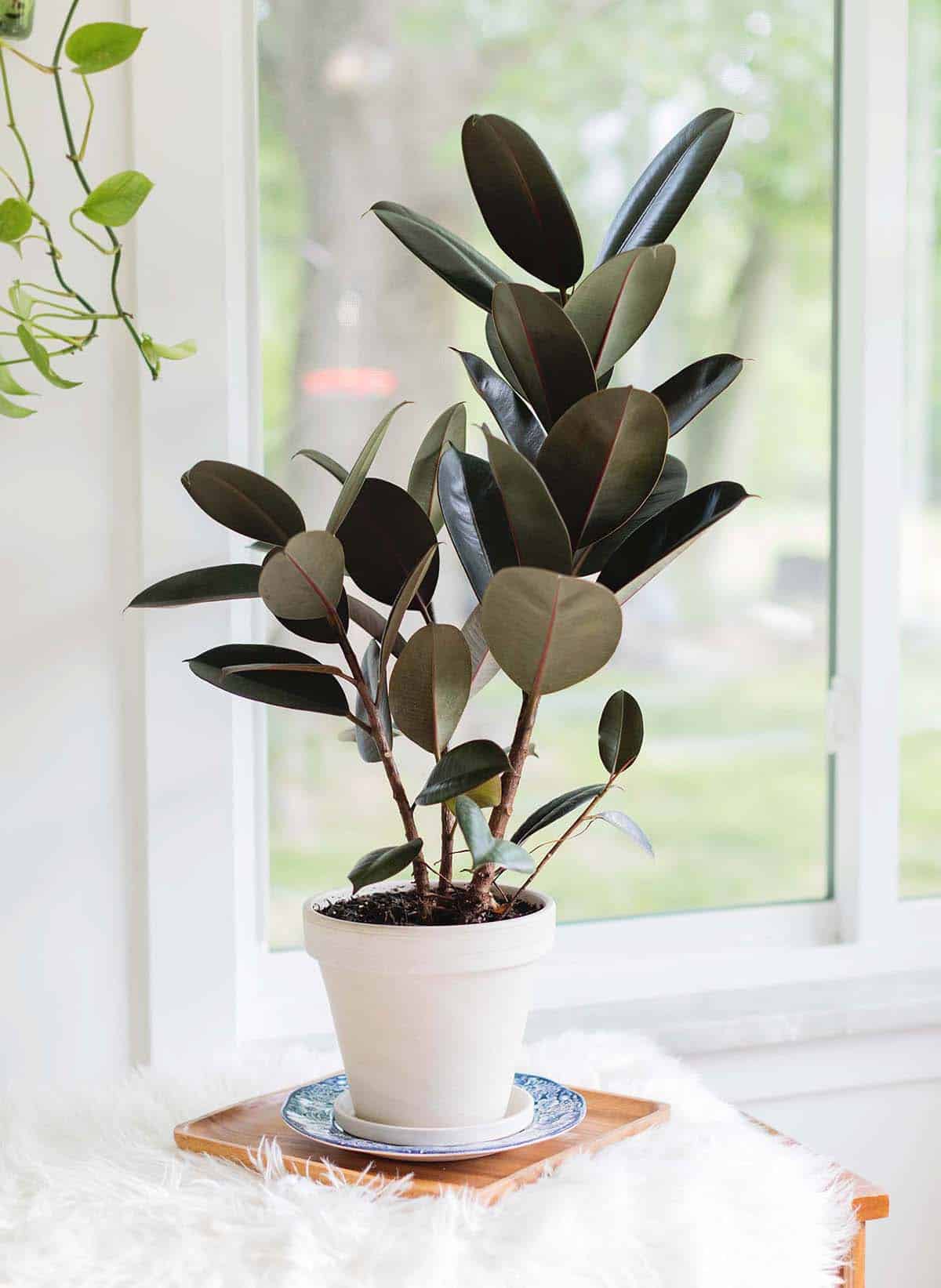Is there a perfect houseplant? Something that’s easy to care for, can grow for years, and has timeless beauty? I think the rubber tree ticks all those boxes. This tree has glossy, dense foliage and makes quite an impression in any room.
My favorite rubber tree is in a scene from the movie. Sabrina With Audrey Hepburn. In the scene, they are having a grand party and there is a beautiful, tall rubber tree in the room. That rubber tree is definitely a plant goal for me.
Maybe someday mine will be as big and beautiful! With proper care, the tree can grow up to 10 feet tall (sometimes taller) indoors!
Related: Love plants? Learn to care for Fiddle Leaf Figs, Jade Plants, Calathea, Pilea Plants, Snake Plants, Monstera, Peace Lilies, Air Plants, Spider Plants, Christmas Cactus, Poinsettia, and String of Pearls.

The rubber tree is also known as Ficus Elastica and is native to India and parts of tropical Asia. Shiny, leathery leaves give this plant a distinctive look. There really is nothing like it! The rubber tree looks amazing and is a great option for any houseplant lover.

Potting
When you bring home a new rubber tree, there are a few things to consider when potting it. It may seem like a good idea to place your plant in a large pot so that it has plenty of room to grow, but the rubber tree prefers to be a little crowded in the pot.
Try to choose a pot that gives about 2 inches of soil around the entire diameter. This will give your plant plenty of room to grow and thrive. When choosing a pot, earthenware is always a great option. Unglazed clay pots allow moisture in the clay to evaporate from the pot and dry out quickly.
Glazed earthenware will not have the ability to allow moisture to escape. I use both types of pots but a really important aspect of the pot is to make sure it has drainage holes to allow the water to drain out (sitting water will definitely kill your rubber tree). .
Once you’ve figured out your pot, it’s time to think about the soil. The rubber tree likes well-drained soil. An all-purpose indoor mix works great, but I add some extra perlite to give the soil more aeration.
Perlite is an organic material that comes from volcanic eruptions and you can find it at most garden stores. Scoop some of your potting mix and place it in the bottom of the pot. Then, pot your plant so that it sits about 3 inches below the top of the pot.
Fill in the rest of the dirt, making sure your plant stays nice and straight. Use your hands to move the dirt down as you move around the pot. After the sides are filled, place a small layer of dirt on top of your plant.
Once the plant is potted, place it where you want to leave it (rubber trees don’t like change). Repotting can sometimes cause your plant to drop its leaves, so don’t worry if this happens… it’s just getting used to its new environment.
A rest period is very important for your rubber tree once it has been repotted and placed in its new location. Not sure about the best place to plant your plant?
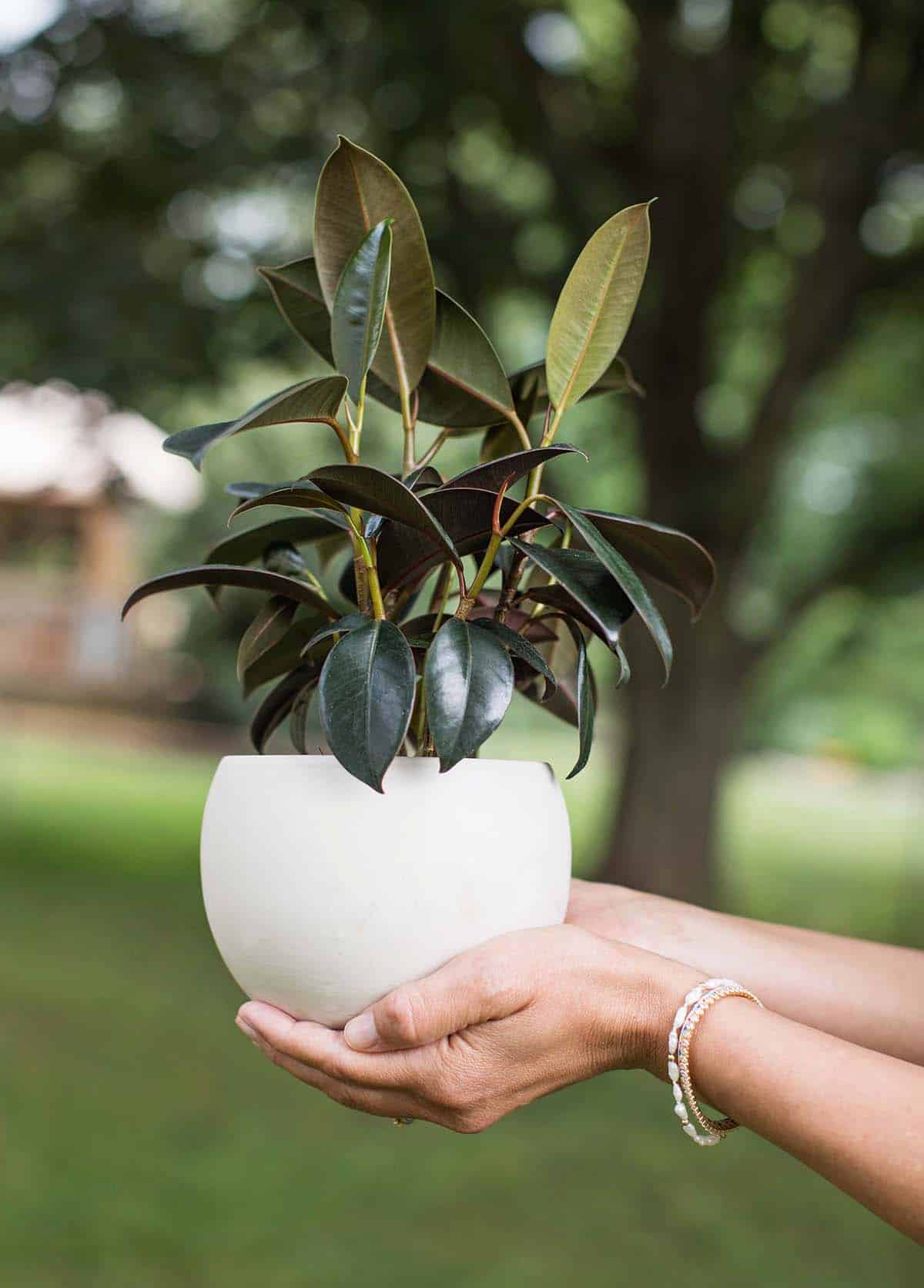
the light
This plant likes to drink light, so space in your home is very important to maintain a healthy plant. The first thing to do when choosing a location is to make sure it doesn’t have drafts, is not near a vent, or has an AC unit blowing on it.
If it is near a draft, the plant will most likely drop leaves (or die). Rubber trees thrive at indoor temperatures of 60-70 degrees Fahrenheit. Find a place in your home with moderate to bright light. Brighter light will help your plant grow faster.

If you place it in a dark spot in the room, it may become “leggy” as it tries to move toward the light. If your plant is “reaching,” just place it in a bright spot. There are some beautiful varieties of rubber tree that require more light.
The variegated species have green, white and pink leaves. Due to the lack of chlorophyll levels, the white in the leaf needs more light. They can “burn” easily so keep an eye on the leaves.
They will tell you if they are getting too much light. If there is any brown (burning) at the tip, it means your variegated plant is getting too much light.

Back to the non-diversified rubber tree. What if you don’t have good window lighting or are worried about your room being too dark? Placing a mirror next to the plant will help bounce more light onto your plant.
Another tip for creating a bright environment is a white room. White paint will bounce more light around! It seems very simple, but it is really effective in helping in a low light situation in a room.
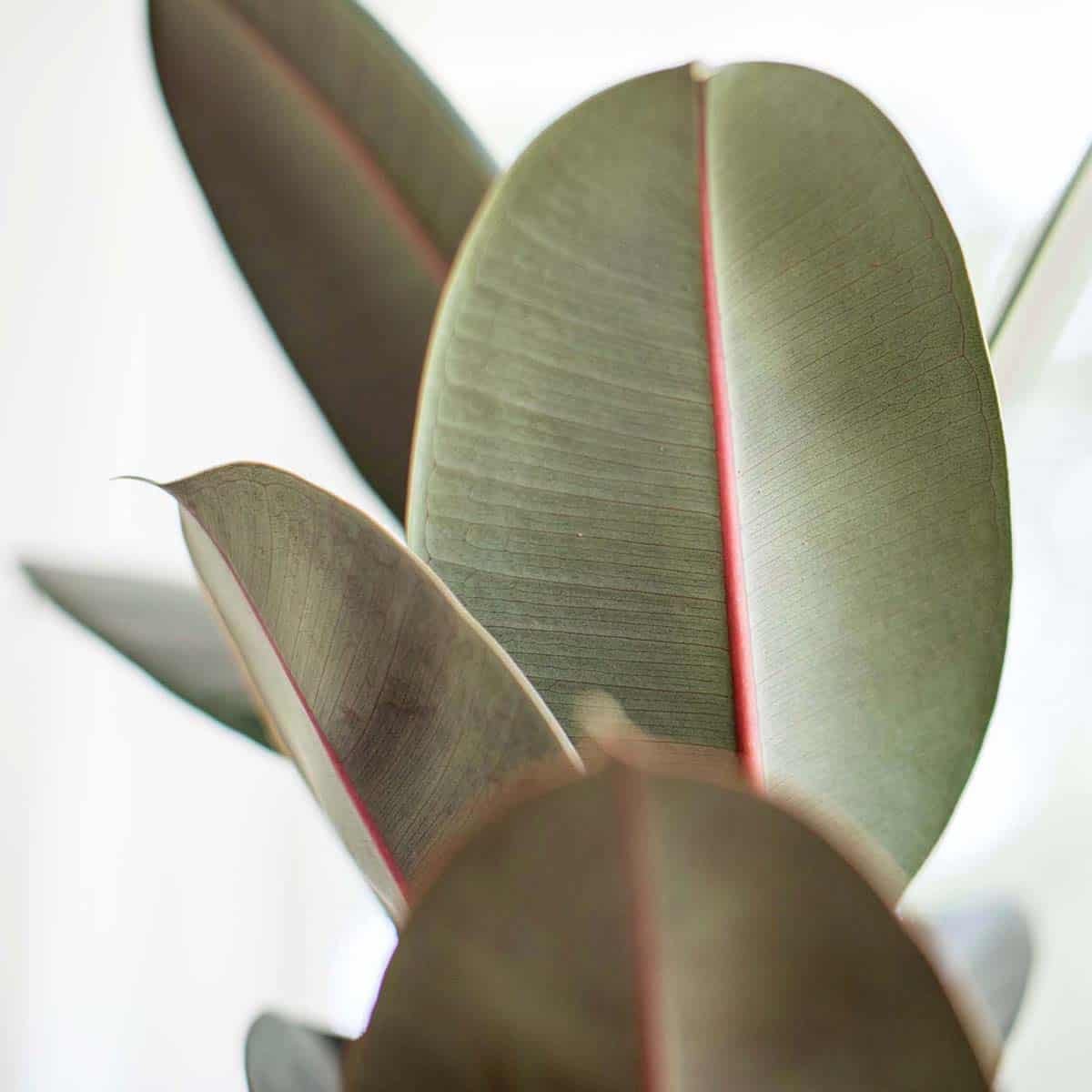
If you want to get the most light on your rubber tree, make sure the leaves are dust free. I’ve found that a rubber tree can get quite dusty, so check the leaves every few weeks for dust accumulation.
If dust is present, a damp cloth will do a great job of removing it. When pruning a rubber tree, be careful of new leaves. New, thin leaves are very fragile and if damaged while young, the damage will remain on the leaf throughout its life.
When sweeping mature leaves, be sure to place your hand under the leaf for support. Additional pressure on the leaf may cause it to crack during dusting. This has happened to me before and it is very sad.
When it bursts, there is a white sap-like liquid that comes from the leaf where it was detached from the branch. This is completely normal but can cause skin irritation in some people, so wash your hands if you get it on your skin.
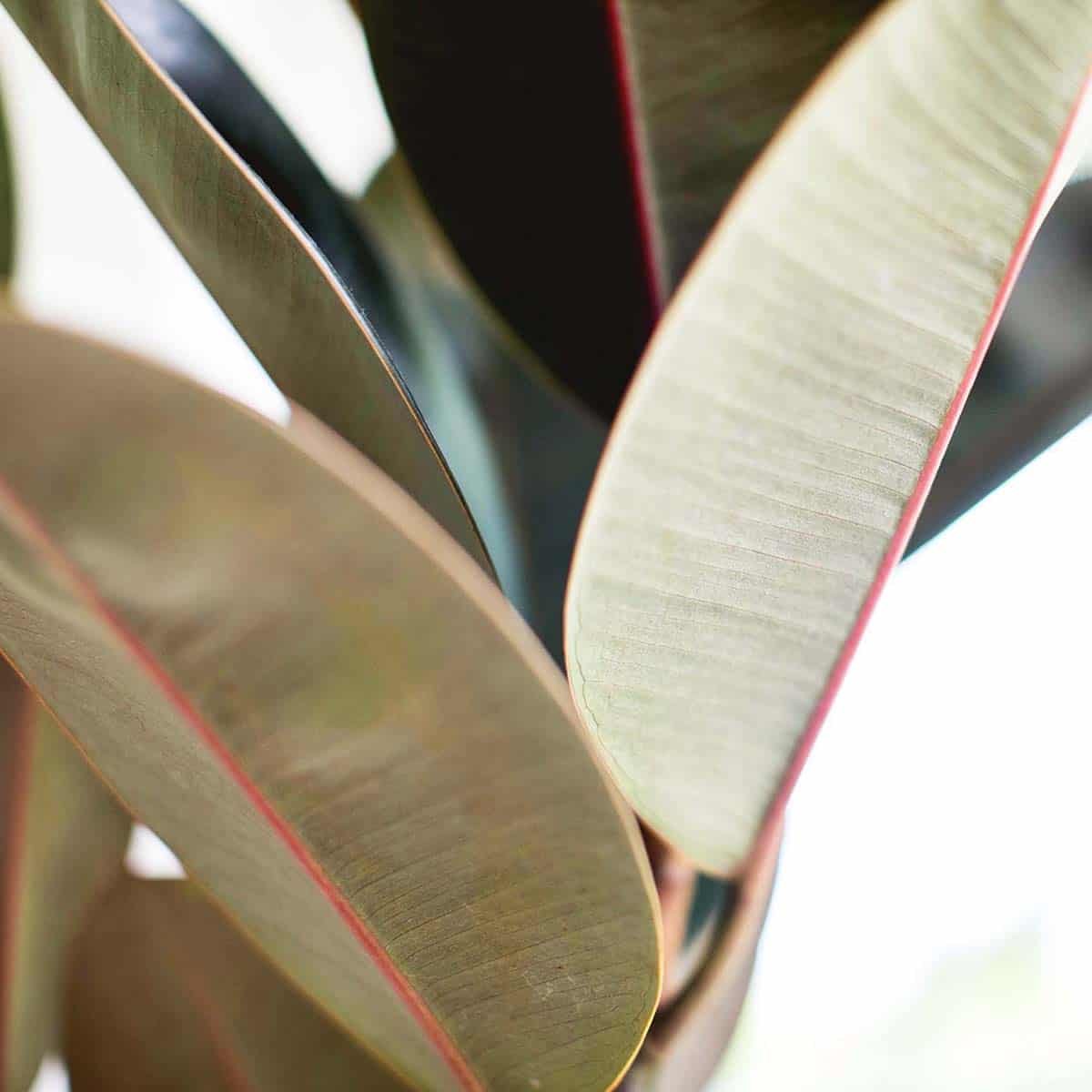
give water
Finding a consistent watering rhythm for your tree will give you the confidence you need to keep your plant alive and healthy for years to come. If the leaves begin to droop slightly, you know your plant is very thirsty.
Rubber trees like to be dry but they don’t like to be bone dry. Another way to tell if your plant is really thirsty is when you’re watering and the soil loses water quickly. Soils with more moisture will take longer to drain. If the water becomes straight, give it another thorough soak.
Water the rubber tree generously, but make sure it has time to dry out to prevent root rot (this happens when the plant is waterlogged or if it sits in water for a long time). remain).
If the root rots. Then your plant is unlikely to survive, so avoid overwatering at all costs. As a rule of thumb, allow the soil in the top 2/3 of your plant to dry out before watering your rubber tree again.
You can also stick your finger in 3-4 inches of soil) and feel if there is any moisture or lift the pot and feel if the post is heavy from holding moisture. After watering your rubber tree, if any water spills into your saucer, discard the excess water so the plant doesn’t sit in water and get root rot.
The frequency of watering will depend on your climate and humidity levels. If you live in a dry climate, your plant will need to be watered more frequently. Once you figure out your plant’s rhythm/drying period, it should be really easy to follow a watering routine. This plant likes consistency and will thrive best with a consistent routine.
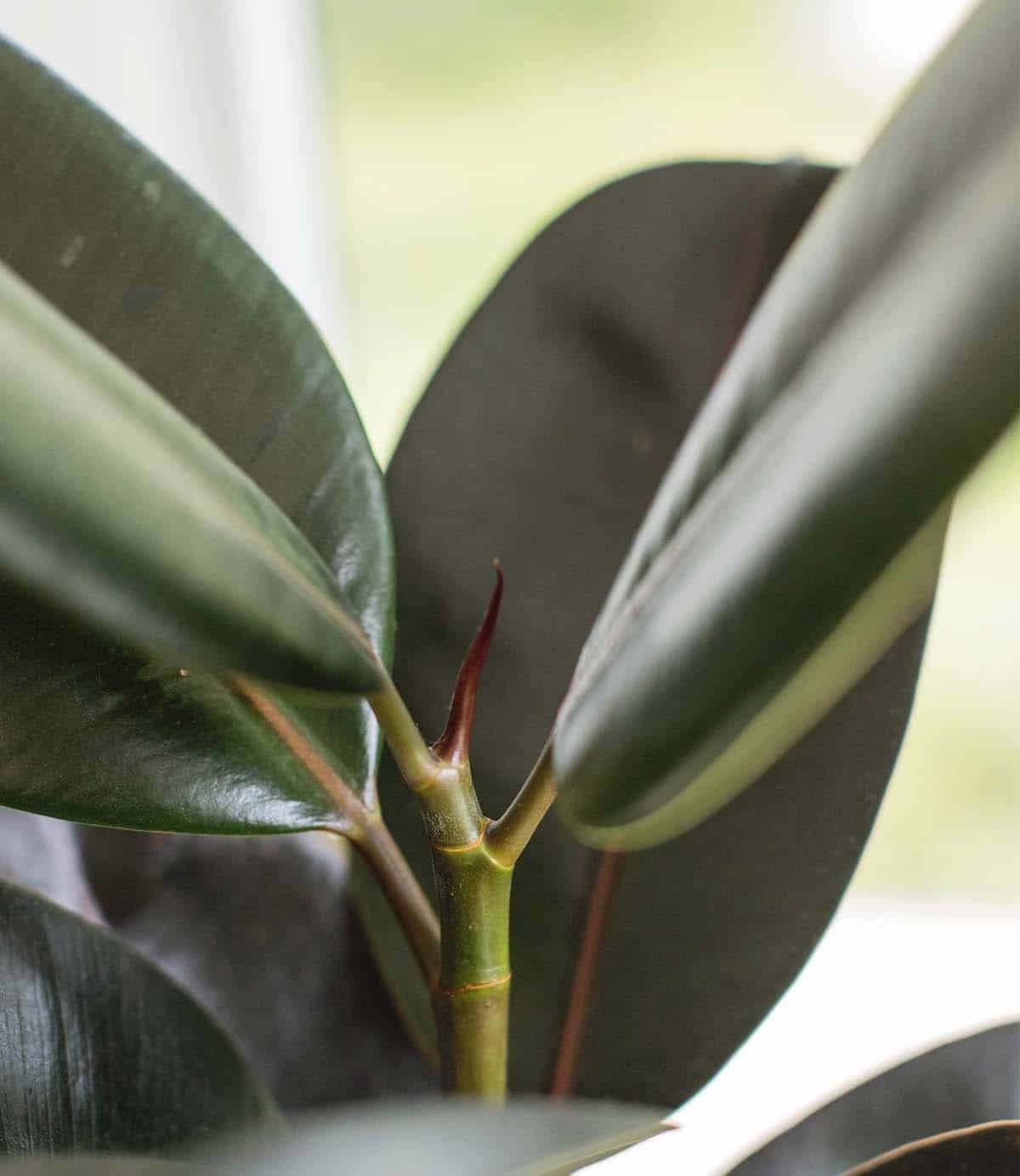
harvest
A rubber tree can grow tall if not pruned. If not pruned, your tree will have a long trunk. If that’s the look you want, great! This will make your tree grow vertically faster!
If you want a more “bushy” tree, you can use your fingers and pick a new growing tip to promote the plant to create more branches.
If you prune or prune a branch, that part will split into two branches as new growth comes in. Pruning is an interesting habit that gives great results over time.
Fertilize
The rubber tree likes to be fed with compost to promote growth. Fertilize your tree in the spring/summer (growing season), but come back in the fall/winter months. A good rule of thumb is to fertilize your plant every other watering session.
I like to use a liquid fertilizer that I can add to my water.
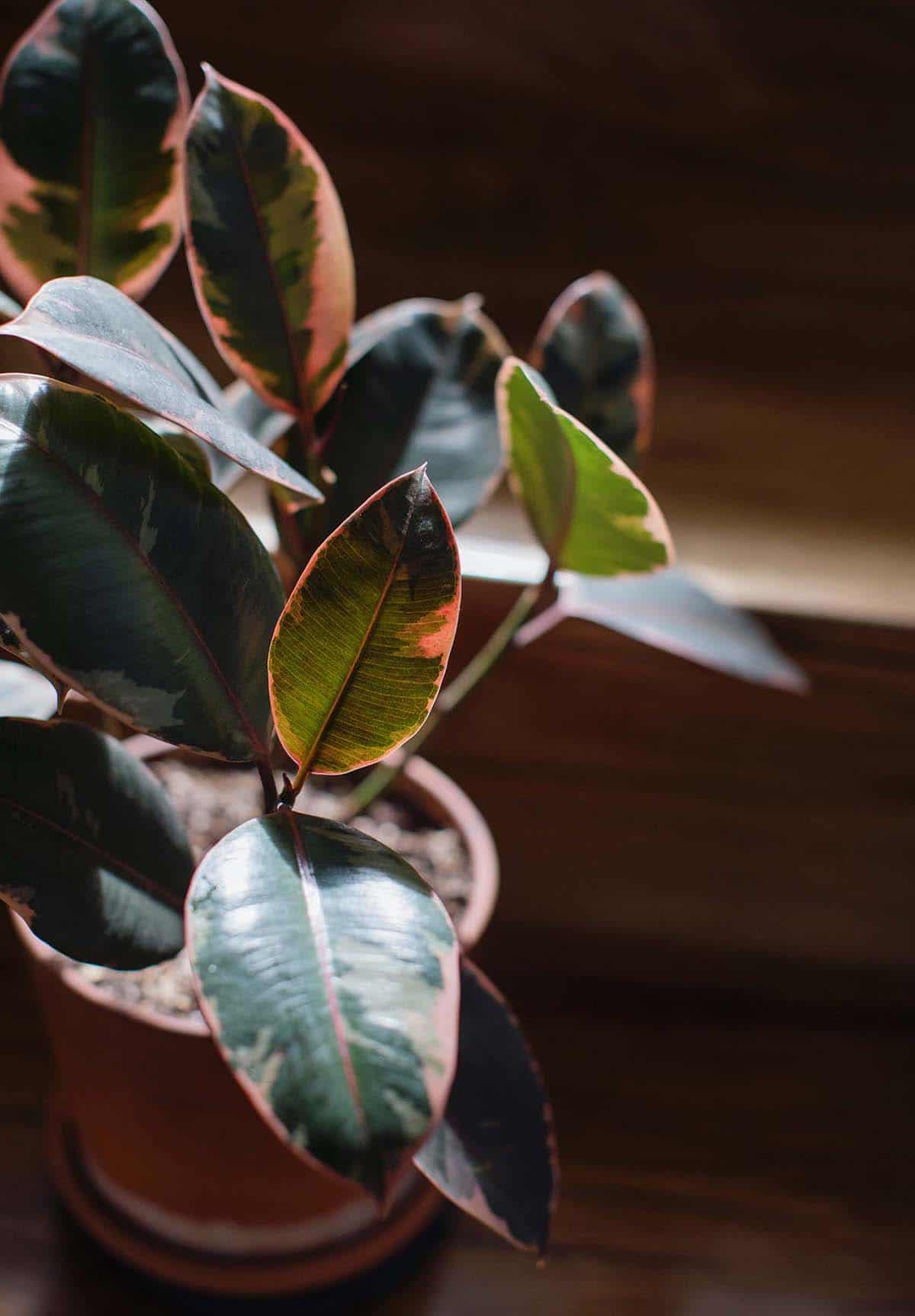
Knowing that my fertilizer is liquid gives me peace of mind that the fertilizer is evenly distributed throughout the water (unlike a granular or powder mix). When choosing a fertilizer, there will be three letters on its package: NPK.
“N” stands for nitrogen. Nitrogen helps produce chlorophyll, which leads to photosynthesis, which leads to a bigger, healthier plant! “P” stands for phosphorus. Phosphorus helps keep your plant’s roots healthy and promotes root growth.
The last letter “K” stands for potassium. Potassium helps your plant distribute nutrients. It also helps your plant fight disease. Think of it as an immunity booster for your plant! A standard houseplant fertilizer will work best for your rubber tree.
Be sure to read your fertilizer label and follow the directions. I like to use half the recommended amount of fertilizer with rubber trees. Using too much fertilizer can cause your plant to burn.
Burn means that the root system has accumulated too many nutrients and can no longer accept/absorb water. If your plant is likely to get too much fertilizer, give it a good water to clean the roots. Don’t fertilize for the next week to give your plant time to recover and rest.
What if your rubber tree is dropping leaves?
When you repot or move your rubber tree, it is very common for it to drop a couple of leaves due to the shock. Old leaves will drop here and there as they get older. This is completely normal!
What if your rubber tree drops a bunch of leaves all at once? This is not normal and can be caused by over-watering or other problems. If your tree’s leaves begin to droop, turn yellow and eventually fall off, it is most likely due to water.
Yellowing of leaves is called chlorosis. Chlorosis means your plant is not making chlorophyll. It’s amazing how plants can tell you what they need by their color.
If your leaf is turning yellow, this is likely a call for help. Stop watering and make sure your plant is drying out between waterings so it doesn’t pool water.
If this continues to happen, take your plant out of the pot and check for root rot. The quickest way to tell if your plant has suffered from root rot is to look for wet, dark or black roots. If you see this, sometimes your plant can be saved, but it’s likely that the roots will die and the plant won’t make it.
If you can, remove dead roots from the root system and pot the plant in fresh potting soil (not waterlogged potting soil). Give your plant some time and hopefully it will bounce back!
Another reason why your plant’s leaves are turning yellow is lack of light. If so, then place your plant in a bright spot so it can soak up more sun. Sun is like medicine for your plant and it can cure your leaf drop problem. Also, make sure the plant is not near a draft as this will also cause the leaves to drop.
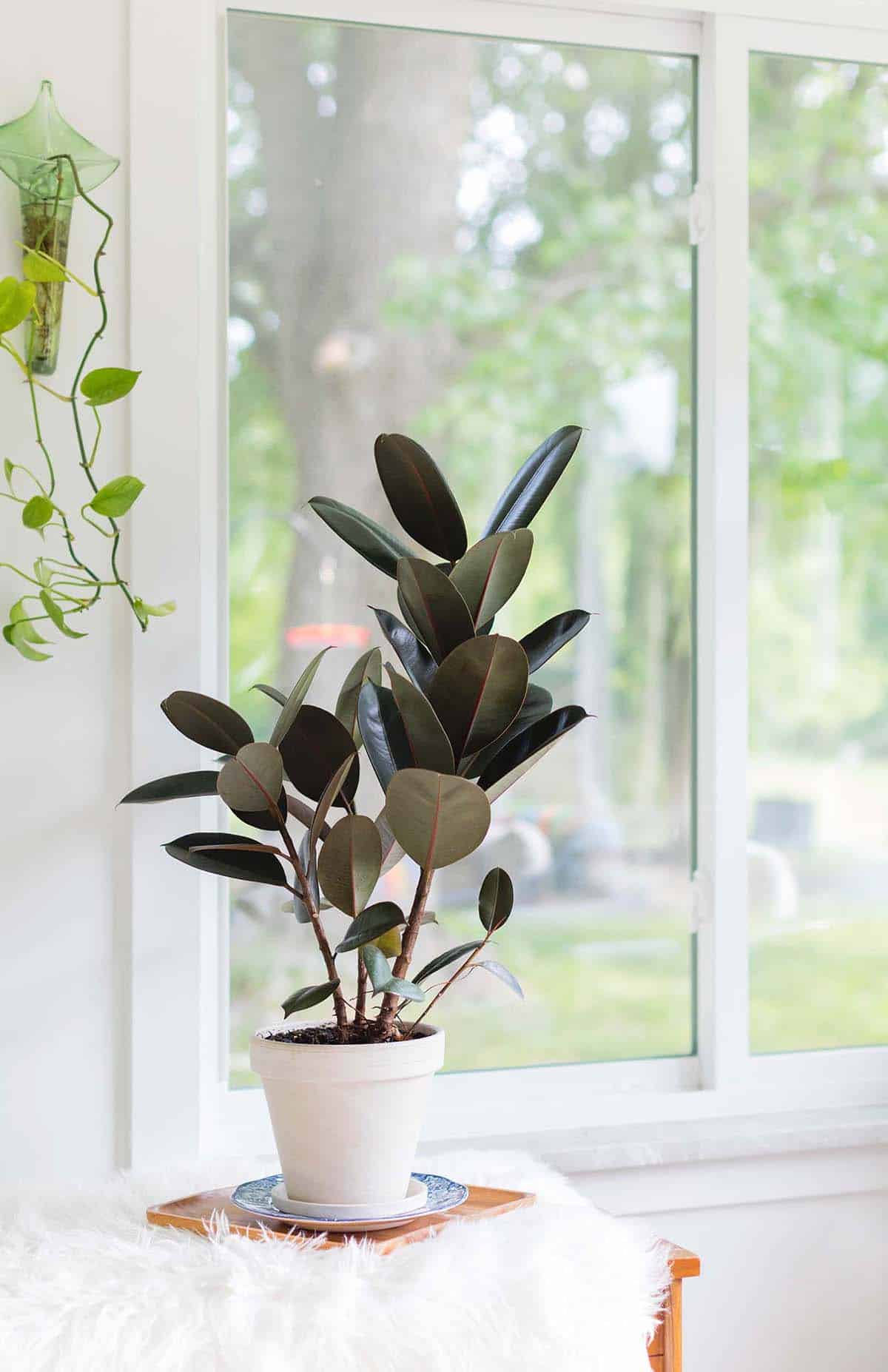
The rubber tree is very easy going and makes a great addition to any plant lover’s home. I hope these tips help and you can enjoy your rubber tree for years to come! –.to go n

